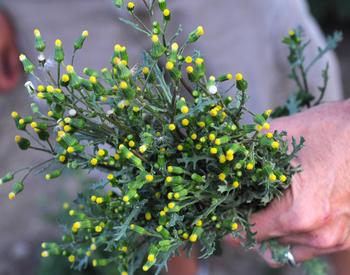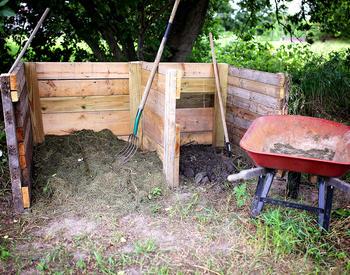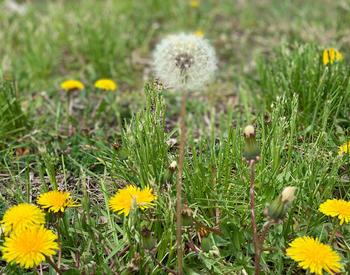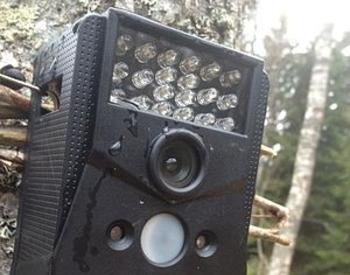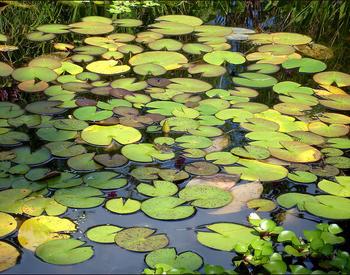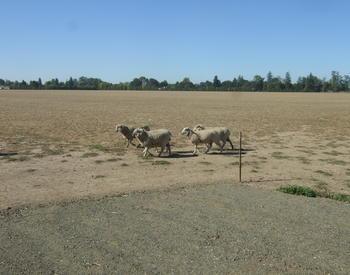We want to eradicate scotch broom at our log pond project. Like to know best size of weed wrench and proper handling / disposal of pulled plants.
You can use a smaller (a 24 inch or 43 inch) weed wrench to pull scotch broom. This is because you only want to pull the smaller plants that have a basal stem diameter of ½ inch or less. Cut, don't pull the larger plants with a with a stump diameter of ½ inch or greater. It is more effective to cut larger plants because the larger cut ones will die when cut, and pulling them will disturb the soil stimulate more seed germination and result in more scotch broom plants.
Below I have copied some more complete information about scotch broom control from a great document called "Integrated Pest Management (IPM) Guide for Common Weeds", which includes weed control expertise from the Pacific Northwest and was compiled by the Northwest Weed Management Partnership. Be sure to read the important notes below about herbicide use.
Mechanical control of scotch broom
- Cutting large plants (stem greater than 1/2 inch) is very effective without herbicides in the mid July-Sept.
- Pull smaller plants (less than 1/2 inch) by hand or with a weed wrench.
- Mowing is sometimes done to knock down large Scotch broom patches, but should be avoided when seed pods are ripe. Also, keep in mind there is a good chance that seeds already on the ground will be spread by mowing.
- Early season mowing typically results in dense, multi-stemmed regrowth; great for spraying, not so great for "lop and leave."
Chemical control of scotch broom
- If possible, spray scotch broom before and after bloom when it is growing vigorously.
- Water stress in late summer can cause reduced herbicide effectiveness.
- Garlon 3A or 4, glyphosate, and Crossbow are all effective. Be careful of surrounding vegetation!
- Garlon 3A and Milestone mixed are very effective and don't require complete coverage of plant for total control. Care must be taken around trees and shrubs due to Milestone's soil activity.
- Treat new seedlings every year.
Integrated Pest Management (IPM) methods
- Mow in early spring.
- Treat regrowth in fall or the following spring with Garlon, Milestone VM Plus or Crossbow.
- You can also use glyphosate (Round Up) for early fall treatments, though results may be marginal on thicker stems. Application will kill non-target vegetation.
- Cut stumps often don't need herbicide treatment if they are an inch in diameter or bigger. Late summer cutting is best.
Additional tips
- Don't mow Scotch broom when seed pods are ripe.
- Pulling large plants with a weed wrench creates ideal growing conditions for seed bank so consider cutting instead. A battery powered reciprocating saw is a great tool for cutting large stems.
- Seed treatment area heavily with grass to shade out Scotch broom seedlings.
- Calibrate sprayer well and watch your rates.
Disclaimers
- Always read the entire label before using any herbicide. Wear safety gear and mix herbicides in a safe environment.
- A surfactant and indicator dye will help with control and efficacy. Note regarding surfactants: Just as with herbicides, read label directions! Some surfactants are appropriate for use with certain herbicides but not others. Also, if using a surfactant on or near water, read label directions to see if the surfactant you are using is approved for aquatic environments.
- Glyphosate-based products, such as Roundup and Rodeo are non-selective -- they will kill all green plants!
- Herbicides typically work best when applied on temperate (~ 60 - 72 degrees) non-windy days followed by 12 hours of no rain. If temps are cooler and/or there has been limited rainfall, the effects of herbicide application will take longer to become apparent.
- Plant material disposal: Dry and/or burn pulled or cut plant material. Dry the plant material on a tarp or plastic barrier to prevent soil contact with roots.
- Once weeds are reduced or eradicated it is critical to seed or plant the treated area, preferably with natives. Open ground, or one with sparse vegetation, is very likely to come back as a first-class weed patch!
¡Use los pesticidas con seguridad!
- Póngase ropa de protección y equipo de seguridad según las recomendaciones de la etiqueta. Báñese después de cada uso.
- Lea la etiqueta del pesticida—aunque lo haya usado antes. Siga al pie de la letra las indicaciones de la etiqueta (y cualquiera otra indicación que Ud. tenga).
- Tenga precaución al aplicar los pesticidas. Conozca su responsabilidad legal como aplicador de pesticidas. Usted puede ser responsable de heridas o daños resultantes del uso de un pesticida.



